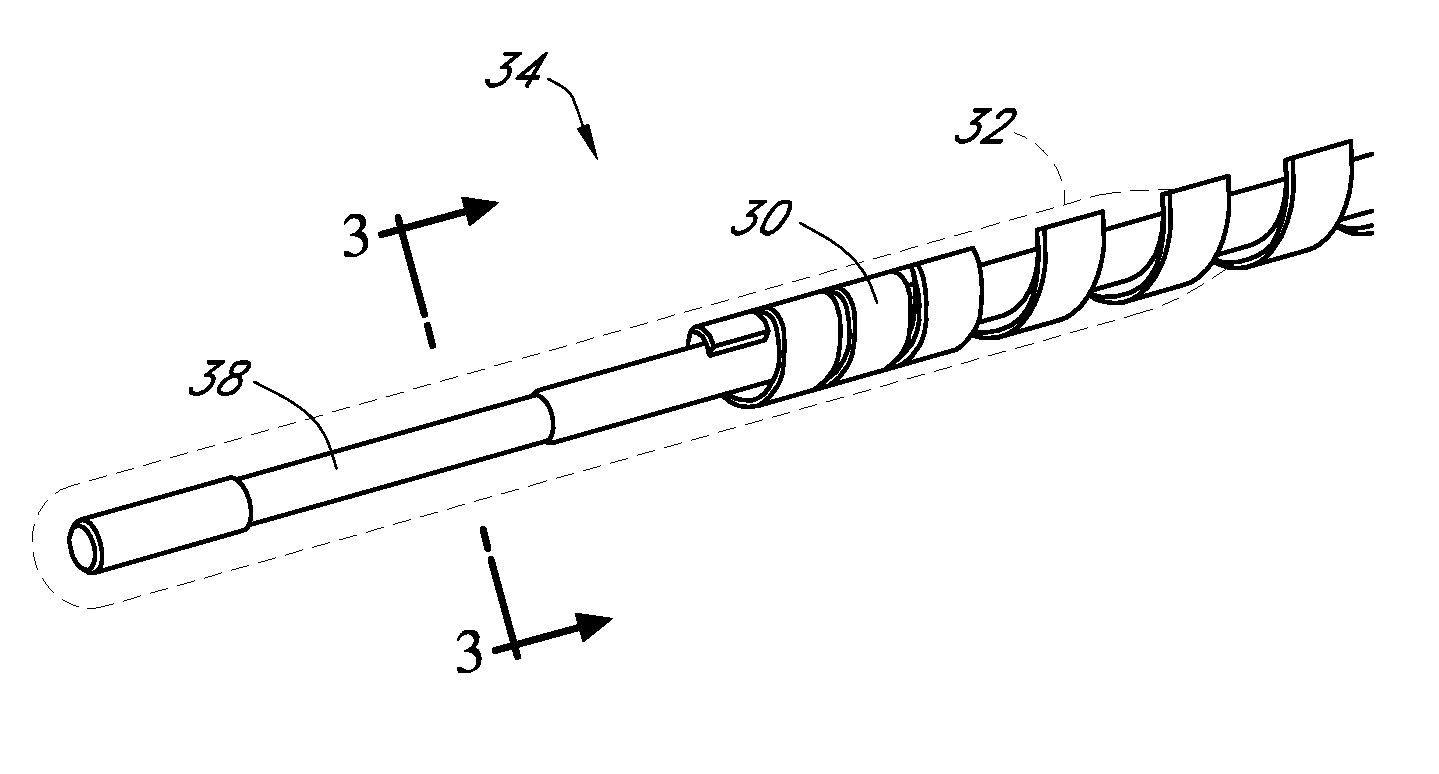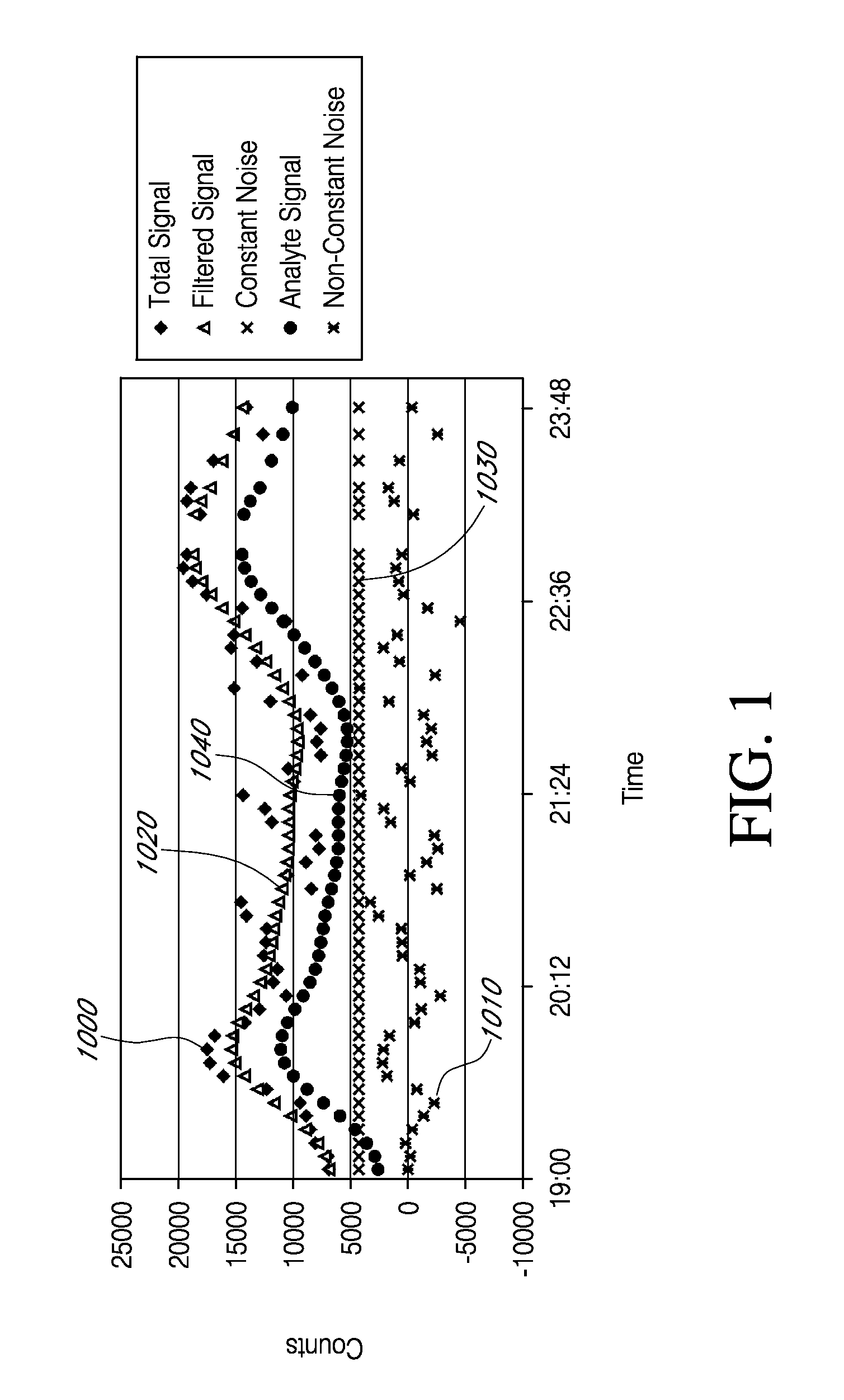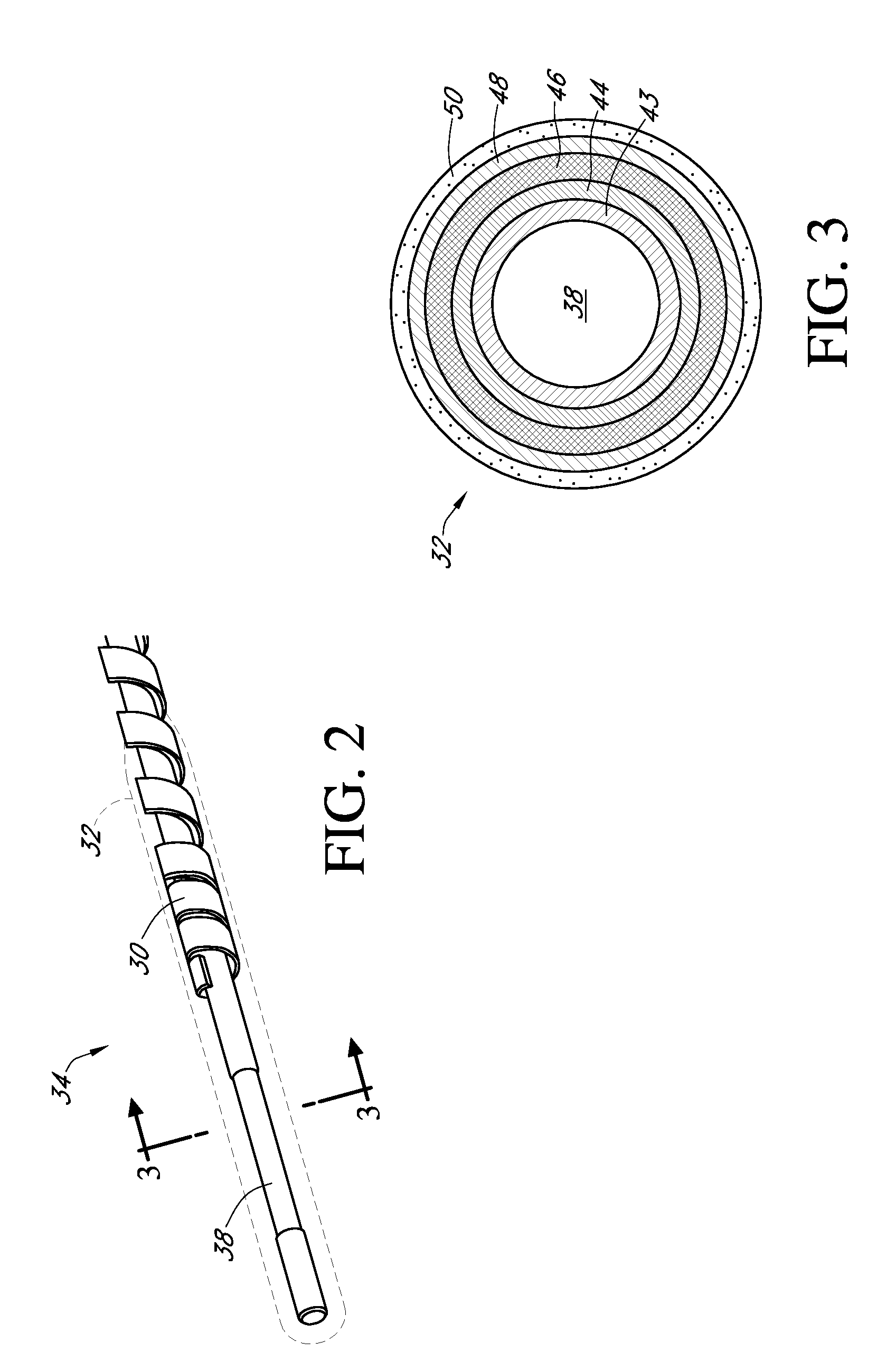Particle-containing membrane and particulate electrode for analyte sensors
- Summary
- Abstract
- Description
- Claims
- Application Information
AI Technical Summary
Benefits of technology
Problems solved by technology
Method used
Image
Examples
example 1
Effect of Particle-Containing Domain Composition on Sensor Function
[0233]Small structured continuous glucose sensors were constructed, including a membrane having enzyme (e.g., GOX) and polyurethane resistance domains. The sensors were divided into three groups, 1) a control group having no particle-containing domain applied (Control), 2) a test group having a non-powered particle-containing domain including platinum particles and carbon particles (e.g., the conductive component) dispersed in a silicone polymer blend (the non-conductive component) (Si+Pt / C), and 3) another test group having a particle-containing domain including only platinum particles dispersed in a silicone polymer blend (Si+Pt). The completed sensors were placed in a PBS buffer solution until sensor break-in was complete. Then the sensors were sequentially placed in PBS solutions containing glucose (100-mg / dL), H2O2 (200 μM) and / or acetaminophen (220 μM). The H2O2 solution represents an internally derived noise-p...
example 2
Effect of Conductive Component Concentration on Particle-Containing Domain Function
[0236]Small structured continuous glucose sensors were constructed, including a membrane having enzyme (e.g., GOX) and polyurethane resistance domains. The sensors were divided into three groups and then particle-containing domain materials, having different concentrations of platinum particles were applied. The non-powered particle-containing domain of the first group (Si) included no conductive component. The non-powered particle-containing domain of the second group (Si+0.1% Pt) included 0.1 wt % platinum particles (the conductive component) dispersed in the silicone material (the non-conductive component). The non-powered particle-containing domain of the third group (Si+1% Pt) included 1 wt % platinum particles (the conductive component) dispersed in the silicone material (the non-conductive component). The completed sensors were placed in a PBS buffer solution until sensor break-in was complete;...
example 3
Effectiveness of Particle-Containing Domains Constructed by Alternate Methods
[0239]Small structured continuous glucose sensors were constructed, including a membrane having enzyme (e.g., GOX) and polyurethane resistance domains. The sensors were then sprayed with an additional layer of resistance domain material, including 5% Chronothane H (e.g., the non-conductive component) in THF. Next, the sensors were divided into three groups. The first group of sensors had no particle-containing domain applied. The second group of sensors was sprayed with an additional 24 layers of the polyurethane solution and then cured. The third group of sensors was sprayed with an additional 3 layers of the polyurethane solution, lightly rolled in platinum particles and then cured.
[0240]The three groups of sensors were placed in a PBS solution until sensor break-in was complete. Then, the sensors were tested sequentially in PBS solutions containing 40 mg / dL glucose, 200 mg / dL glucose, 400 mg / dL glucose, ...
PUM
 Login to View More
Login to View More Abstract
Description
Claims
Application Information
 Login to View More
Login to View More - R&D
- Intellectual Property
- Life Sciences
- Materials
- Tech Scout
- Unparalleled Data Quality
- Higher Quality Content
- 60% Fewer Hallucinations
Browse by: Latest US Patents, China's latest patents, Technical Efficacy Thesaurus, Application Domain, Technology Topic, Popular Technical Reports.
© 2025 PatSnap. All rights reserved.Legal|Privacy policy|Modern Slavery Act Transparency Statement|Sitemap|About US| Contact US: help@patsnap.com



